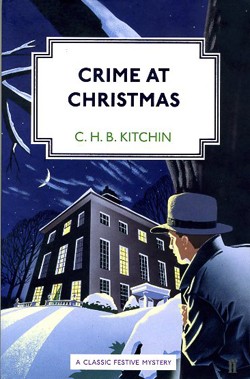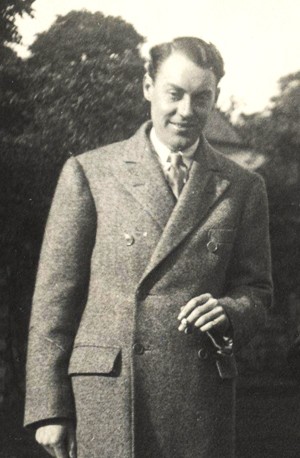
British crime fiction from the so-called Golden Age grows in popularity. Sometimes modern writers produce pastiche versions, and sometimes publishers re-issue the genuine article, and this is the case here, with Faber & Faber unearthing a seasonal original dating back to 1934. The crucial thing to remember is that this is not pastiche, or faux Golden Age – it is the real thing. Modern day sensibilities – particularly those concerning class and social conventions – are applied at your peril…
We have a classic location – a substantial mansion in Hampstead, London, some time in the 1930s. A classic day for a murder, too – we pick up the narrative on Christmas Eve. Malcolm Warren is a stockbroker, and a very sharp individual indeed. He is, of course, a complete and utter snob by today’s standards. After finalising a financial deal with a client called Mr Quisberg, Warren takes a taxi to Beresford Lodge where he is to be one of the the Quisbergs’ Christmas guests.
As Warren is shown to his room to dress for dinner, we get a scathing account of the Quisbergs’ lack of taste in furnishing. Warren’s fellow house guests are a predictably eccentric bunch, and he dissects them and their frailties with equal candour. When he wakes early on Christmas morning, he finds one of them – the unfortunate Mrs Harley – skewered on the iron railings of his balcony.

Clifford Henry Benn Kitchin was a wealthy barrister who was also a successful investor, pianist, bridge player and breeder of greyhounds. He saw service in France in World War I, and numbered Prime Minister Henry Asquith and novelist LP Hartley among his wide circle of friends. He died in 1967. The photograph (right) was taken by fellow socialite, Lady Ottoline Morrell.
Although the demise of Mrs Harley is initially put down to an unfortunate accident while she was sleep-walking, another death convinces Warren that there is a murderer among his fellow guests. He is determined, despite an injury incurred while playing musical chairs, to find the culprit. Could it be one of the Quisberg’s grown-up children? How about the curiously urbane butler, Edwins? And don’t forget the self-assured and rather beautiful nurse who is helping young Cyril Quisberg recover from his appendix operation. Perhaps we are looking for two murderers?
Is the book any good? The plot is fairly preposterous, and the elaborate social protocols of the time may as well be happening on another planet. The solution is certainly ingenious, if not entirely plausible, but Kitchin helpfully provides what he calls ‘a catechism’ at the end of the book, where a bemused reader asks the author a series of questions to clear up one or two of the finer points of what happened. That device in itself suggests a lack of clarity in the narrative.
Warren himself is a slightly limp-wristed hero, a person of integrity but perhaps shackled by his social boundaries. This being said, the author sometimes gives us glimpses of real perception, particularly in the eloquent descriptions of a London whose topography and atmosphere we shall never see again.
Crime at Christmas is an interesting curiosity for fans of the genre, and is entertaining in a waspish Evelyn Waugh fashion. A lost classic? Certainly not the latter, and as for the former, it is probably with good reason. The tale is less ‘Golden’ than another mystery which begins at Christmas, the wonderful The Nine Tailors, which was also published in 1934. Finally, despite the elegant and evocative cover I have to report, sadly, that there is no snow. The Hampstead weather that Christmas was – rather like the book – mild, and rather damp.
From time to time we review other republished examples of classic crime fiction. The Big Bow Mystery or Fatality in Fleet Street are well worth a look.
Faber & Faber
Print/Kindle/iBook
£3.79
CFL Rating: 3 Stars








